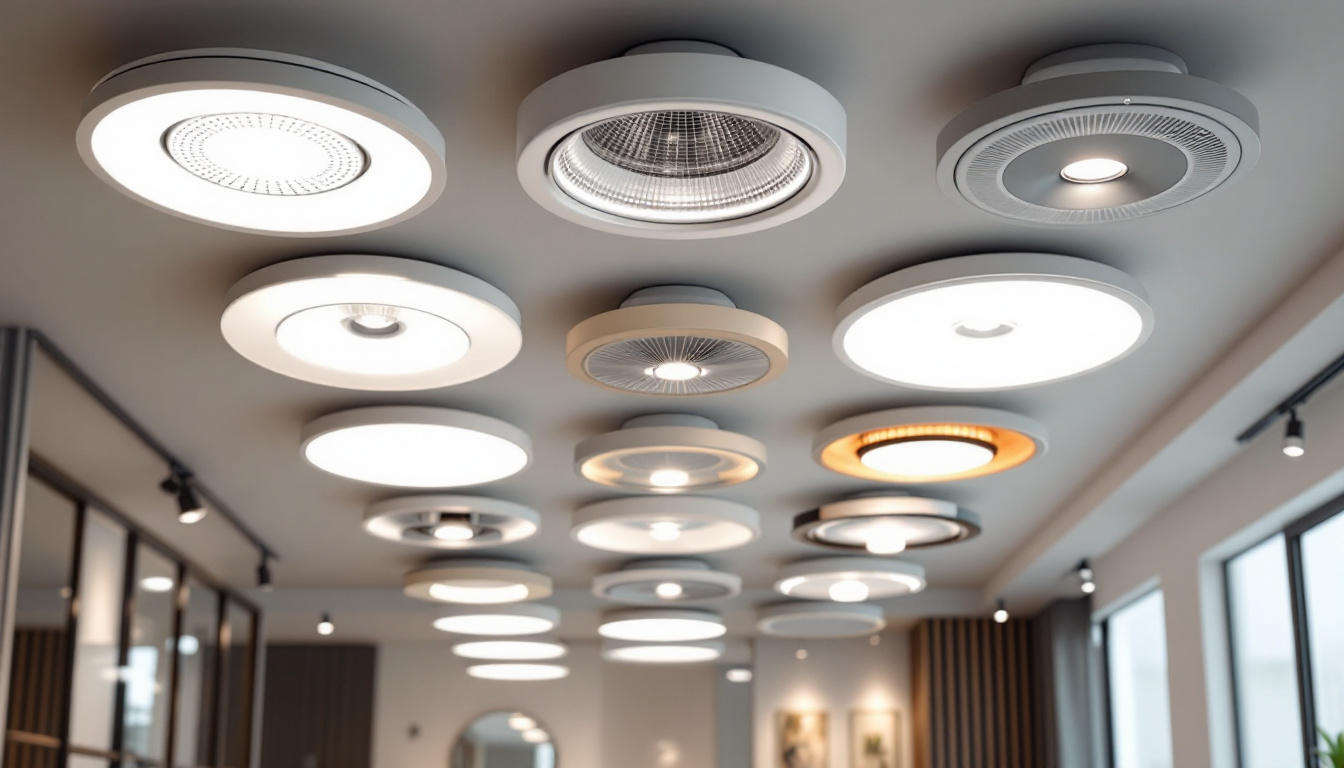
Recessed lighting has become a popular choice for both residential and commercial spaces, offering a sleek and modern aesthetic. However, the effectiveness and appeal of recessed lighting can be significantly influenced by the choice of lighting covers. For lighting contractors, understanding the various types of recessed lighting covers, their benefits, and installation techniques is crucial for delivering high-quality results to clients. This article will delve into everything lighting contractors need to know about recessed lighting covers.
Recessed lighting covers, also known as trims or housings, serve as the finishing touch for recessed lighting fixtures. They not only enhance the overall appearance of the lighting but also play a vital role in directing light effectively. The right cover can significantly impact the ambiance of a space, making it essential for contractors to be well-versed in the options available.
There is a wide variety of recessed lighting covers available, each designed for specific applications and aesthetics. Understanding these types can help contractors recommend the best options to their clients.
The materials used in recessed lighting covers can affect both performance and aesthetics. Common materials include:
When selecting a recessed lighting cover, contractors should consider the specific needs of the space. Factors such as ceiling height, room function, and desired ambiance play a significant role in this decision. For instance, in a home theater, baffle trims may be preferred to minimize glare, while in a commercial setting, reflector trims might be chosen for their brightness.
Moreover, the choice of recessed lighting cover can also influence energy efficiency and maintenance. For example, LED-compatible trims are increasingly popular as they offer long-lasting illumination and reduced energy consumption. Contractors should also consider the ease of installation and whether the trim allows for easy access to the bulb for replacement. This can be particularly important in high ceilings or hard-to-reach areas where maintenance can be a challenge.
Additionally, the aesthetic appeal of the trim should not be overlooked. Many homeowners are looking for designs that complement their interior decor, whether it be modern, traditional, or minimalist. Some trims come with customizable options, such as color finishes or decorative elements, allowing for a more personalized touch that can enhance the overall design of the space. Understanding the interplay between functionality and style will enable contractors to provide tailored solutions that meet their clients’ unique needs.
Recessed lighting covers offer numerous advantages that can enhance the overall lighting design of a space. Understanding these benefits is essential for contractors looking to provide value to their clients.
One of the primary benefits of recessed lighting covers is their ability to improve the visual appeal of a space. Covers come in various styles and finishes, allowing contractors to match them with the overall decor. This seamless integration contributes to a more polished and professional look. For instance, a sleek, brushed nickel finish can complement modern interiors, while a classic white trim might be better suited for traditional settings. Additionally, the choice of cover can influence the perception of space; lighter colors can make a room feel larger and more open, while darker finishes can add depth and coziness.
Different types of recessed lighting covers provide varying degrees of light control. For example, reflector trims can focus light in specific areas, while baffle trims help diffuse light to create a softer ambiance. This versatility allows contractors to tailor lighting solutions to the unique needs of each project. Furthermore, adjustable trims can offer even more flexibility, enabling users to direct light where it’s needed most, such as highlighting artwork or illuminating workspaces. This adaptability not only enhances functionality but also allows for creative lighting designs that can transform the mood of a room.
Using the right recessed lighting covers can also contribute to energy efficiency. Many modern trims are designed to work with LED bulbs, which consume less energy and have a longer lifespan compared to traditional incandescent bulbs. This not only reduces energy costs for clients but also aligns with sustainable building practices. Moreover, some recessed lighting covers are equipped with features such as dimming capabilities, which further enhance energy savings by allowing users to adjust brightness based on their needs. By promoting energy-efficient lighting solutions, contractors can help clients reduce their carbon footprint while enjoying long-term savings on their utility bills. Additionally, the integration of smart lighting technology with recessed covers can offer even more control, enabling users to manage their lighting remotely or set schedules for optimal energy use.
Proper installation of recessed lighting covers is crucial for ensuring optimal performance and safety. Here are some essential tips for lighting contractors to keep in mind during the installation process.
Before beginning the installation, it is vital to plan the layout of the recessed lighting. Consider factors such as the spacing between fixtures, the height of the ceiling, and the intended use of the space. Proper planning will help create a balanced and effective lighting design.
When installing recessed lighting covers, contractors must ensure that all electrical connections are secure and compliant with local codes. This includes checking the compatibility of the cover with the light fixture and ensuring that the wiring is properly insulated to prevent any hazards.
Once the electrical connections are complete, securing the recessed lighting cover is the next step. Most covers are designed to snap or screw into place, but it is essential to follow the manufacturer’s instructions for proper installation. Ensuring a tight fit will prevent any light leakage and enhance the overall effectiveness of the lighting.
Regular maintenance of recessed lighting covers is essential for ensuring their longevity and performance. Here are some maintenance tips for lighting contractors to share with their clients.
Dust and debris can accumulate on recessed lighting covers, affecting both their appearance and light output. Contractors should recommend gentle cleaning methods, such as using a soft cloth or a duster, to avoid scratching the surface. For more stubborn stains, a mild soap solution can be used, but it is important to ensure that the cover is completely dry before turning the lights back on.
Regular inspections of recessed lighting covers can help identify any signs of wear or damage. Contractors should encourage clients to check for cracks, discoloration, or loose fittings. Addressing these issues promptly can prevent further damage and ensure the safety of the lighting system.
As technology evolves, so do the options available for recessed lighting covers. Contractors should stay informed about new products and trends in the market. Upgrading to more energy-efficient or aesthetically pleasing covers can enhance the overall lighting design and provide added value to clients.
Even experienced lighting contractors can make mistakes when it comes to recessed lighting covers. Being aware of common pitfalls can help ensure a successful installation and satisfied clients.
One of the most common mistakes is failing to ensure compatibility between the recessed lighting cover and the light fixture. Contractors should always verify that the cover is designed for the specific type of fixture being used. This includes checking for size, electrical requirements, and intended use.
Local building codes and regulations can vary significantly, and neglecting to adhere to these guidelines can lead to safety hazards and costly fines. Contractors should familiarize themselves with local codes related to recessed lighting installations and ensure compliance throughout the project.
While contractors may have expertise in lighting design, it is essential to consider the preferences and needs of the client. Ignoring client input can lead to dissatisfaction with the final result. Engaging clients in the decision-making process can help ensure that the chosen recessed lighting covers align with their vision.
Recessed lighting covers play a pivotal role in the overall effectiveness and aesthetic appeal of recessed lighting installations. For lighting contractors, understanding the various types, benefits, installation techniques, and maintenance practices associated with these covers is essential for delivering high-quality results. By staying informed and avoiding common pitfalls, contractors can enhance their services and ensure client satisfaction in every project.
Ready to elevate your lighting projects with the highest quality recessed lighting covers? Look no further than LumenWholesale, where we offer an exceptional range of spec-grade lighting products at unbeatable wholesale prices. Say goodbye to local distributor markups and hello to superior lighting solutions that meet rigorous industry standards. With LumenWholesale, bulk buying is a breeze, thanks to our free shipping policy, ensuring you get the best value without any hidden costs. Don’t compromise on quality or price. Visit LumenWholesale today and discover the perfect blend of quality, affordability, and convenience for all your lighting needs.

Discover essential insights into the art of painting lighting fixtures with our comprehensive guide tailored for lighting contractors.

Discover the pitfalls lighting contractors often face when dealing with wholesale LED lights.

Discover the answers to the most frequently asked questions by lighting contractors in “Light Supply.” This insightful article delves into industry challenges, innovative solutions, and expert tips to illuminate your projects with precision and creativity..

Discover the essential insights into recessed LED fixtures with answers to lighting contractors’ most common questions.